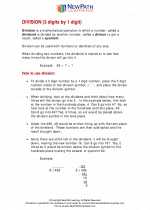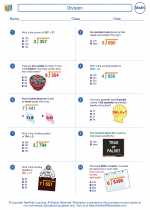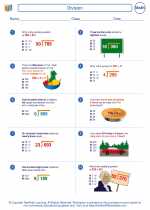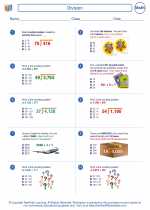Coordinate Plane
The coordinate plane, also known as the Cartesian plane, is a two-dimensional system used to locate points. It consists of two perpendicular number lines, the x-axis, and the y-axis, which intersect at their zero points, called the origin.
Parts of the Coordinate Plane:
- Origin: The point where the x-axis and the y-axis intersect, denoted by (0, 0).
- X-Axis: The horizontal number line.
- Y-Axis: The vertical number line.
- Quadrants: The four sections of the coordinate plane formed by the intersection of the x-axis and the y-axis. They are labeled as Quadrant I, Quadrant II, Quadrant III, and Quadrant IV, in a counterclockwise direction.
Coordinates:
Points on the coordinate plane are located using ordered pairs (x, y), where x represents the horizontal position along the x-axis, and y represents the vertical position along the y-axis.
Plotting Points:
To plot a point, locate the x-coordinate on the x-axis, then move vertically to the y-coordinate on the y-axis, and mark the point at their intersection.
Distance Between Points:
The distance between two points on the coordinate plane can be found using the distance formula: √((x2 - x1)^2 + (y2 - y1)^2).
Study Guide:
- What is the origin of the coordinate plane?
- Describe the x-axis and y-axis.
- What are the four quadrants of the coordinate plane?
- How are points located on the coordinate plane?
- How can you find the distance between two points on the coordinate plane?
[Coordinate Plane] Related Worksheets and Study Guides:
.◂Math Worksheets and Study Guides Sixth Grade. Division
Study Guide Division
Division  Worksheet/Answer key
Worksheet/Answer key Division
Division  Worksheet/Answer key
Worksheet/Answer key Division
Division  Worksheet/Answer key
Worksheet/Answer key Division
Division 

 Worksheet/Answer key
Worksheet/Answer key
 Worksheet/Answer key
Worksheet/Answer key
 Worksheet/Answer key
Worksheet/Answer key

The resources above cover the following skills:
Connections to the Grade 6 Focal Points (NCTM)
Number and Operations: Students' work in dividing fractions shows them that they can express the result of dividing two whole numbers as a fraction (viewed as parts of a whole). Students then extend their work in grade 5 with division of whole numbers to give mixed number and decimal solutions to division problems with whole numbers. They recognize that ratio tables not only derive from rows in the multiplication table but also connect with equivalent fractions. Students distinguish multiplicative comparisons from additive comparisons.